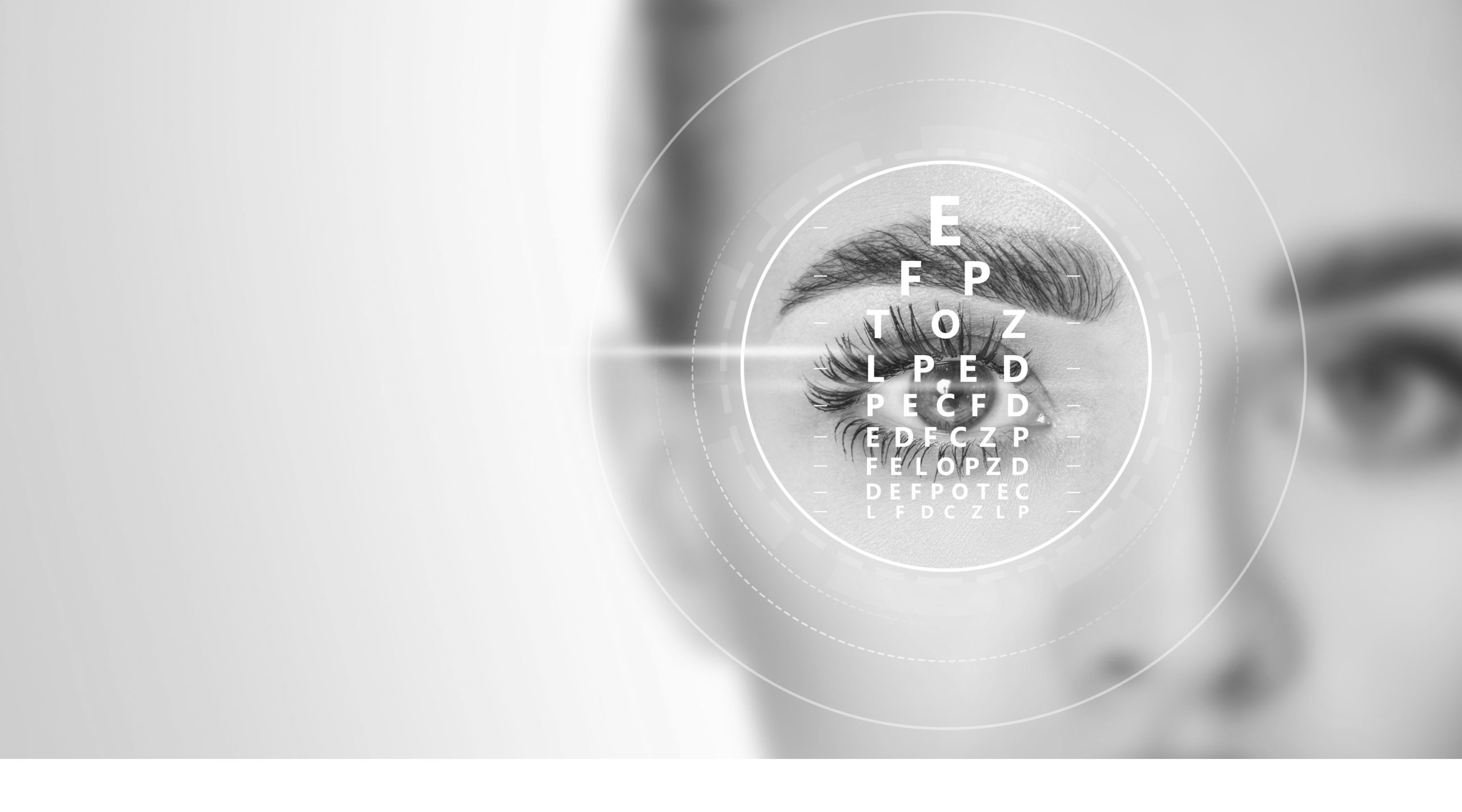
Astigmatism
Astigmatism is the most common vision problem. Especially when it is moderate and manifests at young age, it is often asymptomatic due to the eye’s ability to maintain a clear image through continuous accommodation. As long as it can, of course.
Astigmatism is a type of refractive error (ametropia) that causes loss of vision clarity due to either a deformation of the corneal surface (the cornea looks like a squashed oval more on one meridian than on another), or to an alteration of the internal structures of the eye. Images appear not so sharp and their edges are blurry.
The origins of astigmatism are still unknown. While there are many possible causes, a family history of astigmatism is usually the most common. Other possible factors include eye injuries resulting in corneal scarring, certain types of eye surgery, and keratoconus, a progressive eye disease leading to irregular astigmatism and corneal thinning.
People with astigmatism may have difficulties reading a text or seeing the fine details of objects at all distances
Since astigmatism is caused by corneal irregularities, it may be associated to myopia (myopic astigmatism) or hyperopia (hyperopic astigmatism).
Astigmatism is measured in diopters.
Based on its degree of severity, astigmatism may be classified as follows: mild astigmatism up to 1.00 diopter; moderate astigmatism up to 2.00 diopters; and high astigmatism over 2.00 diopters.
Treatment Options
Astigmatism (myopic and hyperopic) is traditionally corrected with glasses (toric or cylindrical lenses) or contact lenses, either gas permeable or soft. Glasses are the most common and easiest to use type of eyewear to treat astigmatism. However, they sometimes cause problems, especially in the case of oblique axes that tend to distort images and disturb depth perception. As a result, astigmatic people experience difficulties when walking, going down flights of stairs and steps, or during any activity associated with a three-dimensional perception.
Contact lenses have their cons too as they tend to rotate every time the eye blinks resulting in misalignment issues. They also require care and cannot be worn for long periods of time as this increases the risk of allergies and infections.
Refractive surgery is currently the most reliable and effective treatment for astigmatism.
Refractive surgery modifies the curvature of the cornea and, as a result, changes its refractive power (magnification power) allowing images to be brought into focus on the retinal surface (in-focus image).
Dr. Appiotti can boast over 30 years of experience and tens of thousands of satisfied patients. He is a recognized authority on the treatment of myopia with tailor-made laser and surgical procedures.
The choice of the best suited laser treatment must always start with a thorough eye exam. The patient’s personal or professional goals should also play a role. This is how an eye surgeon can offer tailor-made solutions to their patients.
Laser and Surgical
Procedures for the Treatment of Astigmatism
The revolutionary 3rd generation of laser vision correction. Best suited to treat myopia and myopic astigmatism. 28 seconds per eye and only two drops of local anesthetic.
The 2nd generation of laser vision correction. Best suited to treat myopia, hyperopia and astigmatism. Tailor-made. Rapid postoperative recovery. Visual recovery in 12 to 24 hours.
The 1st generation of laser vision correction. Best suited to treat myopia, hyperopia and astigmatism. Safe and reliable. Ideal for patients with mild vision problems.
Make an appointment today
Dr. Appiotti performs laser eye surgery in state-of-the-art eye clinics in Milan or Verona. To make an appointment and determine whether you are a good candidate for the laser treatment available for your vision problem, please contact us by email or phone